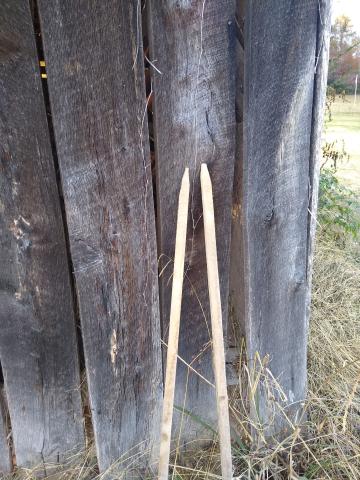Tobacco farming sustained our families
I love to drive our roads here in Union County and check out the old barns visible to the road. When I get a chance to investigate an old barn I dive on the opportunity. What I have noticed is that most old barns still standing in East Tennessee were built and used mostly to dry and store tobacco. If the barn was built for something else like livestock, it was usually converted later on to dry tobacco. It is very easy to tell that a barn was used for tobacco. Usually there is a pile of tobacco sticks somewhere in the barn as well as rafters close enough together to hang the tobacco sticks across while drying in the barn.
Tobacco farming has a long history in Tennessee. For more than a couple of hundred years, every little farm across the state grew at least a little bit of tobacco. When I was a kid, I remember seeing small patches grown all over East Tennessee and seeing big fields of it growing on the sides of the road in Middle Tennessee. Anyone over the age of at least 50 years old has more than likely helped in the process of working in tobacco.
Growing tobacco is a labor intensive job, even with the proper tractor implements to help out. The process is never-ending with prepping the soil, planting, topping, suckering, cutting, spiking, hanging and stripping the tobacco. I always enjoyed the planting and stripping because you got to sit while you worked and the weather was the best.
In the spring we rode a tobacco setter that was attached to the tractor. The setter would plant each started tobacco plant in the ground and even give it a small drink of water as it is planted. Some old timers remember planting the plants by hand. During the growing season the plants need to have the flowers cut off and the smaller shoots around the base cut off. This process is called topping and suckering the tobacco. This is done so that the plant uses its energy for growing the big healthy leaves on a solid stalk. In the fall the tobacco would be cut, spiked onto a hardwood stick and then hung in the barn to dry. When the moisture in the air is just right it allows the dry leaves to be handled without crumbling. This was called being “in case.”
Usually in the early morning before the dew had lifted was when the tobacco was in case. This is when we would strip the tobacco from the stalks, put it in bundles and stack the bundles into bales of tobacco. The bales of tobacco would then be taken to the local tobacco warehouse to be auctioned off.
For many kids helping in tobacco fields was their first job. Everyone chipped in to grow as much tobacco as possible. Most of the equipment was shared among farmers. The government had allotments that would limit how much tobacco a farmer could grow. Some farmers would even lease their neighbors’ allotments so they could grow more than what the government had allotted them. I never really completely understood how this allotment system worked, but I do know that not long after the government did away with allotments, what farmers called the tobacco buy-out, tobacco farming quickly died out in East Tennessee.
Now some of the only evidence of tobacco farming is quickly rusting tobacco setters, quickly rotting tobacco barns and the stories from quickly aging country people. The times are quickly changing.
- Log in to post comments
